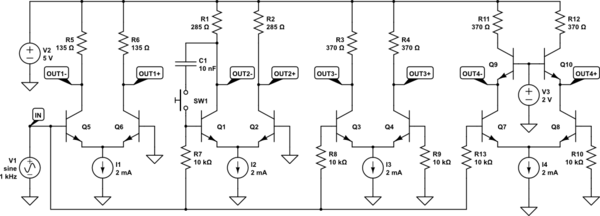I am working on the second stage of an operational amplifier which involves a BJT differential amplifier.
I am trying to increase its bandwidth (part of the requirements. The TA told me that a simple cascode should increase the bandwidth.
I am running simulations and, it seems to me that the cascoded version actually decreases the BW. I have tried to change the biasing voltage with no success and cannot find any source about cascoding increasing the bandwidth.





